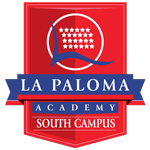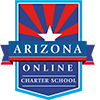Winter Break is right around the corner and the science fair is coming up just as quickly. Getting a jump start on those science fair projects, or at least preparing for the event, could be a fantastic way to keep kids engaged and stimulated during the lulls in holiday cheer.
Scientific Method
Most projects today require experimentation. Thereby, they typically start at the scientific method, so that’s where this article will start. The scientific method not only speaks to the actual experiment, but to the preparation for it and the dissemination of the discoveries and conclusions made.

Graphic from http://edge.ascd.org/
1. Purpose: State the Problem
The first step in scientific exploration, defining the problem, can be as simple as asking a question about the natural world or inventing something to fill an existing need. Choosing a purpose which intrigues your child is important. If he or she is interested in the project, he/she will be more invested and involved.
2. Research: Find Out About the Topic
After deciding on a purpose, the research can begin. Using a variety of sources (books, the Internet, the library, science teachers, and others available) will help students learn about the topic of their problem and help inform their hypothesis. Don’t go overboard with this phase—remind kids to “keep it simple, scientist.” The KISS philosophy can help keep your child from getting overwhelmed or bogged down in this step.
3. Hypothesis: Predict the Outcome to the Problem
Using his/her own knowledge and the research conducted, your child will make their best educated guess and answer the question posed by their purpose. Just remember this statement should be simple and needs to express a possible, proposed outcome—what your child thinks will happen.
4. Experiment: Develop a Procedure to Test the Hypothesis
This step leads to and includes the fun part. Your budding scientist will have to define and layout his/her experiment, which includes creating a list of materials needed to conduct the experiment. Defining the dependent and independent variables of the process and the controls is also a vital step in the design of an experiment. It is important that the experiment be fair and be repeated more than once to confirm the data received. Once the design is complete, it is time to experiment!
If the experiment is failing, revising the design might be in order.
5. Analysis: Record the Results
The next task is the collection and recording of the data obtained from the experiment. This information can be quantitative (measurements, time, temperature, etc.) and qualitative (color, texture, etc.). Encourage your child to record both and be detailed and exact in his/her observations. It will give them a wealth of information to help with the next step. Even if their data is not supporting their hypothesis it should be recorded with accuracy and without bias.
6. Conclusion: Compare the Hypothesis to the Experiment’s Results

Graphic from http://ieet.org/
Does the data gathered support the hypothesis? This is the question at hand when drawing a conclusion. Using recorded data and the analysis of the same, your child should compare the implications of his/her findings to the original hypothesis. If the hypothesis is supported by the data, then the next step is to report the results.
Sometimes, however, the data proves a hypothesis false; in these cases, the cyclical nature of the scientific method is demonstrated. A scientist would then return to the third step laid out here and reconsider his/her hypothesis, redesign the experiment, collect new data, and determine findings based on the revision.
7. Reporting the Results
This is the backbone of science. Scientists freely share the results of their experiments with other scientists to have the findings supported or rejected by recreations of their work. Even at the most complicated levels, scientists share the same procedures younger students will in their science projects: the purpose, hypothesis, the experiment and its details, all the data and any analysis drawn on it, and the conclusion.
To aid you and your child on a journey of scientific exploration, here are some resources which might help.
- How to Prepare a Science Fair Project: A PDF packet put out by ACG/United Learning includes numerous helpful suggestions, including a realistic timeline, and several other useful pages to help young scientists.
- Science Fair Project Resource Guide: IPL2’s online guide contains a trove of information and links geared toward helping parents and students through every step of the project process.
- Steps of the Scientific Method: Science Buddies offers a child-friendly and approachable discussion of scientific method. This site is also a great science resource.
- The Scientific Method: Science Made Simple’s in-depth discussion of the traditional scientific method might help answer some lingering questions.
- Scientific Method & Science Projects: NeoK12 has links to science quizzes, games, activities, presentations, and teacher-reviewed videos to engage and inspire young minds.
- Kids Science Fair Projects: Kids-Fun-Science.com gives a helpful take on the steps important to a successful science fair project.
Need a little encouragement? Check out these articles on science fairs and tips for project success:


